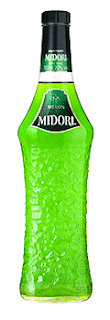Exclusive: Microsoft’s next-generation Windows, code-named Midori
 July 29, 2008 — Microsoft is incubating a componentized non-Windows operating system known as Midori, which is being architected from the ground up to tackle challenges that Redmond has determined cannot be met by simply evolving its existing technology.
July 29, 2008 — Microsoft is incubating a componentized non-Windows operating system known as Midori, which is being architected from the ground up to tackle challenges that Redmond has determined cannot be met by simply evolving its existing technology.
So begins the story “Microsoft’s plans for post-Windows operating system revealed,” which has just been posted to SDTimes.com. For that, we can thank senior editor David Worthington, who has the exclusive on Microsoft’s plans.
The lengthy, detailed report continues:
SD Times has viewed internal Microsoft documents that outline Midori’s proposed design, which is Internet-centric and predicated on the prevalence of connected systems.
Midori is an offshoot of Microsoft Research’s Singularity operating system, the tools and libraries of which are completely managed code. Midori is designed to run directly on native hardware (x86, x64 and ARM), be hosted on the Windows Hyper-V hypervisor, or even be hosted by a Windows process.
Read the entire article on SDTimes.com. Stay tuned for two follow-up stories to be posted in the next few days, “Microsoft maps out migration from Windows” and “Midori created with heightened security.”
Much about Midori is reminiscent of my calls, in March 2006, for Microsoft to create a new minimalist version of Windows that focuses on a smaller, tighter set of APIs — and delivers compatibility with legacy applications via compatibility boxes, vs. native APIs. You can read my comments about that in “Break with the past.”
